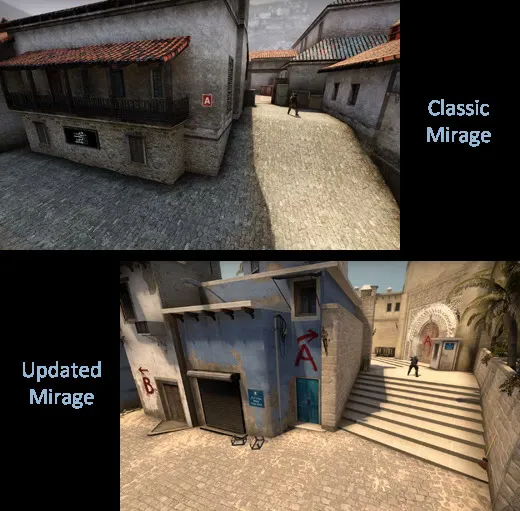Unveiling the Untold Secrets of CS:GO's Competitive Map Pool - A Journey Through its Evolution!
Over the course of 11 years, CS:GO's competitive map pool has seen numerous changes and transformations. These maps hold immense significance for professional teams, who invest countless hours in mastering every corner and angle to gain a competitive edge.
The current standard Active Duty map pool consists of seven maps, selected through a veto system that allows teams to ban and pick maps before a match. However, this system and the number of maps in the pool have evolved significantly since CS:GO's release in 2012 and its first Major at DreamHack Winter 2013.
The journey begins
While Counter-Strike 1.6 and Source had their own map histories, CS:GO marked a more defined map pool. Initially, the game featured four competitive maps: Dust2, Inferno, Nuke and Train, which were remakes from previous versions of Counter-Strike. However, these maps faced issues upon release, leading tournament organizers to use modified versions. Mirage, for instance, had a competitive edition called de_mirage_se.
One of the prominent issues was the visibility and performance hindered by excessive fog and unnecessary elements. To address these concerns, competitive editions ("_se" versions) were created, removing extraneous items to enhance the competitive experience.

The map pool expands
CS:GO's competitive map pool expanded with the addition of Vertigo, Mirage, Cache, Cobblestone, and Overpass over the years. Each map underwent modifications and reworks to improve gameplay balance and address specific issues. However, some additions sparked controversy, such as the sudden inclusion of new maps just before major tournaments, affecting teams' preparation.
The veto system also evolved, transitioning from a random selection process to a more controlled ban-pick system, granting teams more agency in map selection. However, the randomization system persisted at Majors, receiving mixed reactions from players and spectators.
Remakes and major changes
Throughout the years, maps like Cobblestone, Nuke, Dust2 and Train experienced significant reworks or were removed from the Active Duty pool. These changes aimed to enhance gameplay dynamics, address imbalance issues, and refresh the competitive scene.
Some updates faced criticism, such as Nuke's unpopularity and Dust2's return without major improvements. However, these changes often had a profound impact on the competitive landscape, shaping team strategies and performances.
Ancient and Anubis enter the scene
In recent years, Ancient and Anubis joined the competitive map pool, replacing Train and Cache. These additions generated mixed reactions, with some community members questioning the removal of familiar maps like Dust2 or Mirage.
The map pool remained unchanged for several Majors, indicating a period of stability. However, the continuous development of Counter-Strike 2 and Valve's plans for the future remain uncertain, leaving room for potential changes and new map introductions.
The vision for the future
Looking ahead, there is a desire among players and coaches for more map rotation and diversity in the competitive pool. Suggestions include introducing new maps shortly after Majors, allowing teams ample time to practice and adapt.
There is also a call for a balance between puggy and tactical maps, catering to different playstyles and strategies. Maps like Tuscan from Counter-Strike 1.6 are mentioned as potential additions, offering unique gameplay experiences that require diverse approaches and team coordination.
Ultimately, the future of CS:GO's competitive map pool remains dynamic and uncertain. As the game continues to evolve and Counter-Strike 2 approaches, the map pool will likely undergo further transformations, shaping the competitive landscape for years to come.

Kommentarer